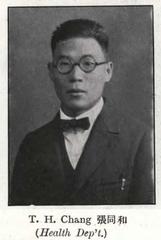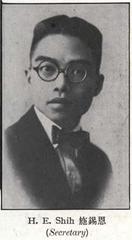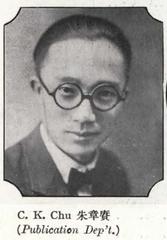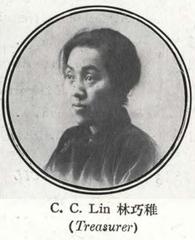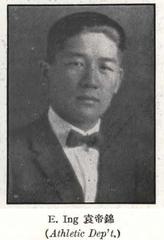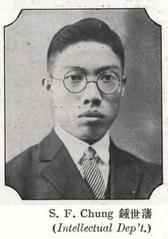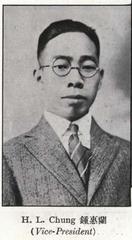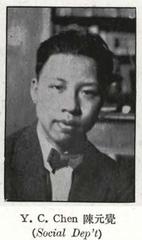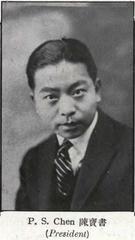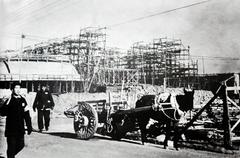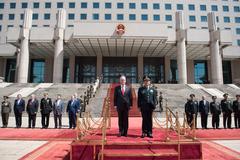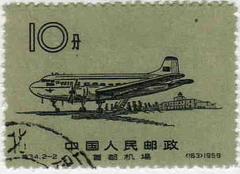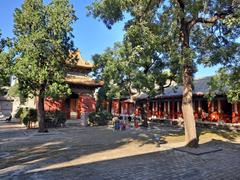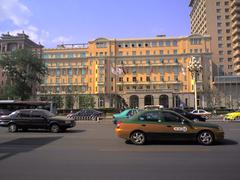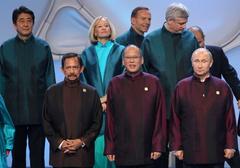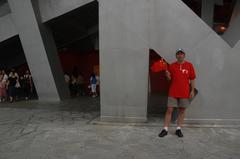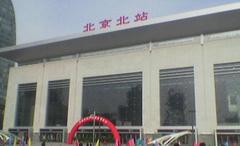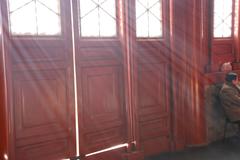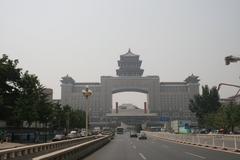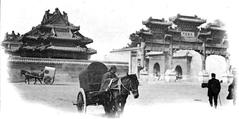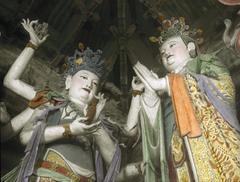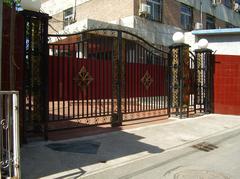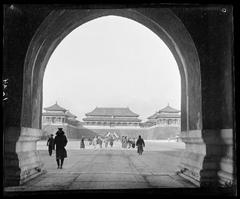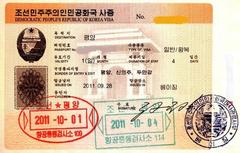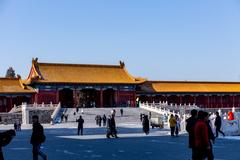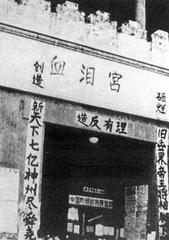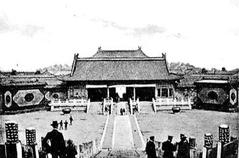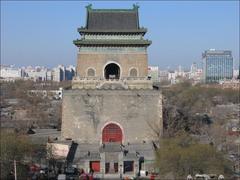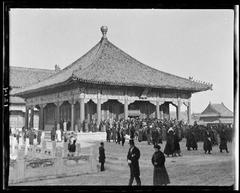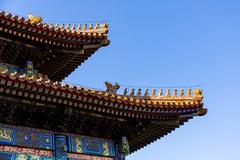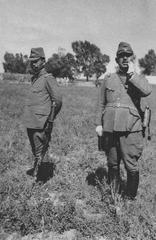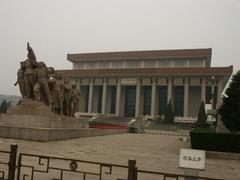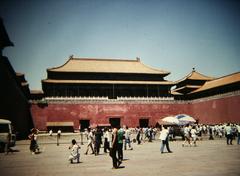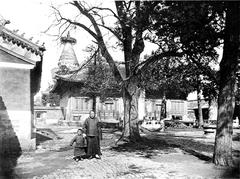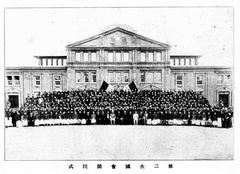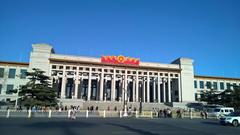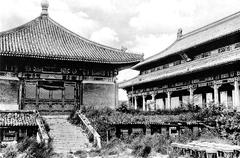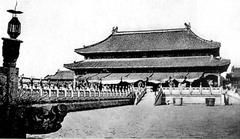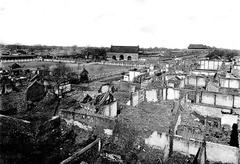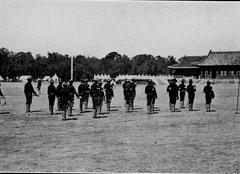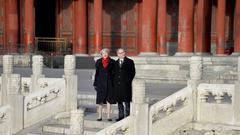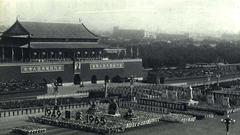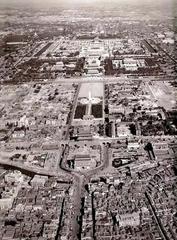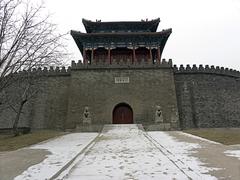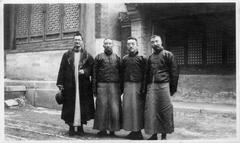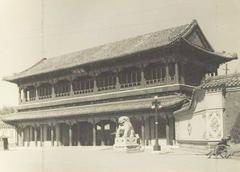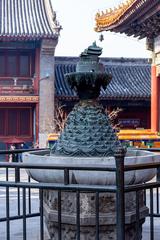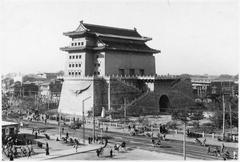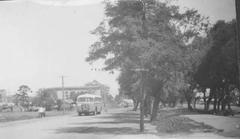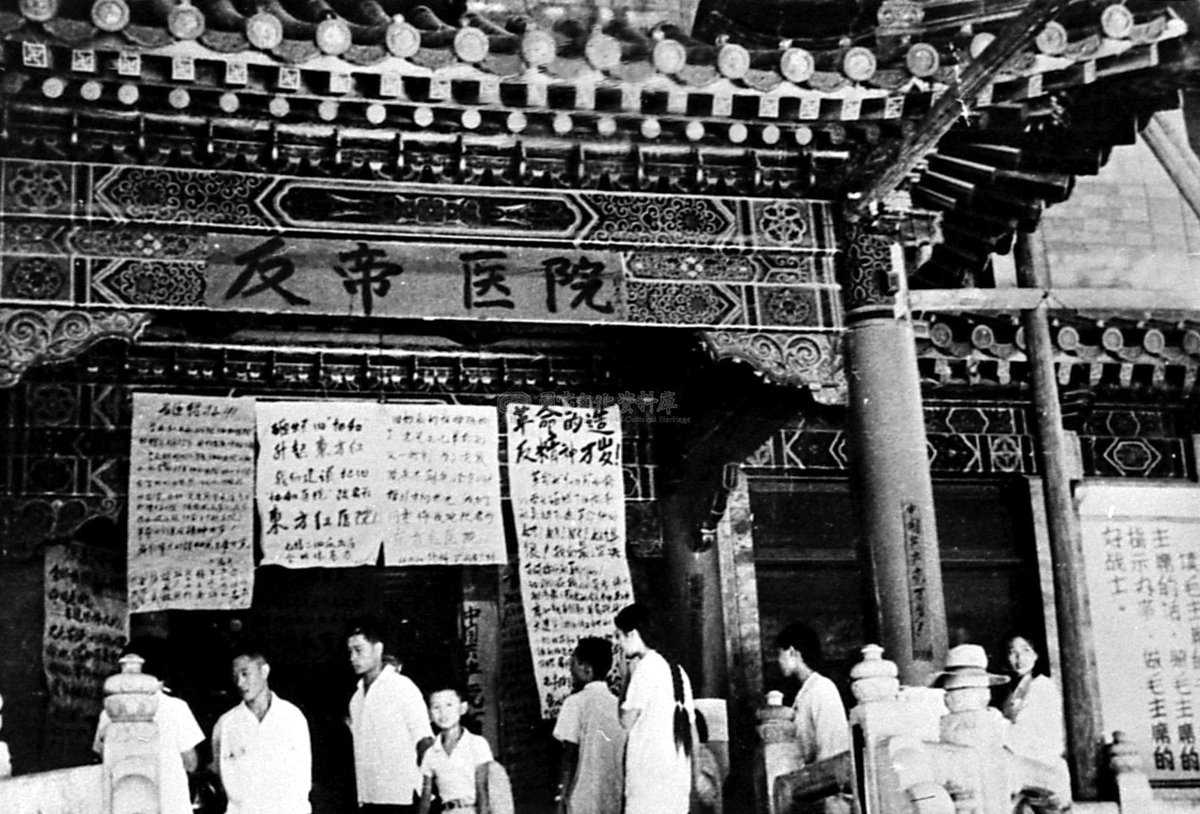
Comprehensive Guide to Visiting Peking Union Medical College Hospital in Beijing, People’s Republic of China
Publication Date: 23/07/2024
Introduction to Peking Union Medical College Hospital
Beijing Union Medical College Hospital (北京协和医院), commonly known as Peking Union Medical College Hospital (PUMCH), stands as a beacon of medical excellence and historical significance in China. Established in 1921 by the Rockefeller Foundation, PUMCH was envisioned as a premier medical institution that would elevate the standards of healthcare and medical education within the country (Rockefeller Foundation). Modeled after Johns Hopkins University and its affiliated hospital in the United States, the institution has seamlessly integrated Western medical practices with Chinese culture, making it a unique entity in the global medical landscape.
The hospital’s architectural design, curated by the American firm Murphy & Dana, is a harmonious blend of traditional Chinese elements and Western medical facility standards, symbolizing its mission to merge the best of both worlds (ArchDaily). Over the decades, PUMCH has not only expanded its facilities and services but has also emerged as a leading center for medical research, education, and public health initiatives. Its resilience during the Cultural Revolution and subsequent modernization efforts have cemented its reputation as a top-tier medical institution in China and beyond (Cultural Revolution, PUMCH Official Website).
Today, PUMCH remains at the forefront of medical advancements, with numerous international collaborations, cutting-edge research contributions, and a strong commitment to medical education. This comprehensive guide aims to provide an in-depth understanding of PUMCH’s historical milestones, architectural significance, medical achievements, and practical visitor information, making it an invaluable resource for medical professionals, researchers, and tourists alike.
Table of Contents
- [Exploring the History and Significance of Beijing Union Medical College Hospital](#exploring-the-history-and-significance-of-beijing-union-medical-college-hospitalexploring-the-history-and-significance-of-beijing-union-medical-college-hospital)
- [Introduction](#introductionintroduction)
- [Founding and Early Years](#founding-and-early-yearsfounding-and-early-years)
- [Architectural Significance](#architectural-significancearchitectural-significance)
- [Development and Expansion](#development-and-expansiondevelopment-and-expansion)
- [Cultural Revolution Impact](#cultural-revolution-impactcultural-revolution-impact)
- [Modern Era and Technological Advancements](#modern-era-and-technological-advancementsmodern-era-and-technological-advancements)
- [Contributions to Medical Education](#contributions-to-medical-educationcontributions-to-medical-education)
- [Research and Innovations](#research-and-innovationsresearch-and-innovations)
- [Role in Public Health](#role-in-public-healthrole-in-public-health)
- [International Collaborations](#international-collaborationsinternational-collaborations)
- [Recognition and Awards](#recognition-and-awardsrecognition-and-awards)
- [Practical Information for Visitors](#practical-information-for-visitorspractical-information-for-visitors)
- [Future Prospects](#future-prospectsfuture-prospects)
- [Visitor Tips for Peking Union Medical College Hospital: Hours, Location, and Services](#visitor-tips-for-peking-union-medical-college-hospital-hours-location-and-servicesvisitor-tips-for-peking-union-medical-college-hospital-hours-location-and-services)
- [Introduction](#introductionintroduction-1)
- [Location and Accessibility](#location-and-accessibilitylocation-and-accessibility)
- [Language and Communication](#language-and-communicationlanguage-and-communication)
- [Appointment Scheduling](#appointment-schedulingappointment-scheduling)
- [Documentation and Identification](#documentation-and-identificationdocumentation-and-identification)
- [Payment and Insurance](#payment-and-insurancepayment-and-insurance)
- [Facilities and Amenities](#facilities-and-amenitiesfacilities-and-amenities)
- [Emergency Services](#emergency-servicesemergency-services)
- [Special Services for International Patients](#special-services-for-international-patientsspecial-services-for-international-patients)
- [Nearby Attractions](#nearby-attractionsnearby-attractions)
- [Cultural Etiquette](#cultural-etiquettecultural-etiquette)
- [Health and Safety Precautions](#health-and-safety-precautionshealth-and-safety-precautions)
- [FAQ](#faqfaq)
- [Contact Information](#contact-informationcontact-information)
- [Conclusion](#conclusionconclusion)
Exploring the History and Significance of Beijing Union Medical College Hospital (北京协和医院)
Introduction
Beijing Union Medical College Hospital (北京协和医院), commonly known as Peking Union Medical College Hospital (PUMCH), is not only a cornerstone of medical excellence in China but also a significant historical site. From its founding in 1921 by the Rockefeller Foundation to its current status as a leading medical institution, PUMCH has played a pivotal role in advancing healthcare, education, and research. In this article, we will explore its rich history, architectural significance, and contributions to medical science, as well as provide practical information for visitors.
Founding and Early Years
PUMCH was established in 1921 by the Rockefeller Foundation, which aimed to create a world-class medical institution in China. The foundation’s investment was part of its broader mission to improve global health and education. The hospital was initially affiliated with the Peking Union Medical College (PUMC), established in 1917. The college and hospital were modeled after Johns Hopkins University and its affiliated hospital in the United States (Rockefeller Foundation).
Architectural Significance
The hospital’s original buildings were designed by the American architectural firm Murphy & Dana, known for their work on educational and medical facilities. The design of the hospital incorporated elements of traditional Chinese architecture, blended with Western medical facility standards. This architectural fusion symbolized the hospital’s mission to integrate Western medical practices with Chinese culture. The main building, with its red brick façade and traditional Chinese roof tiles, remains a landmark in Beijing (ArchDaily).
Development and Expansion
Throughout the 20th century, PUMCH expanded its facilities and services. In the 1950s, the hospital underwent significant renovations and expansions to accommodate the growing demand for medical services. New departments were established, including specialized units for cardiology, neurology, and oncology. The hospital also became a leading center for medical research and education in China, attracting top medical professionals and researchers from around the world.
Cultural Revolution Impact
The Cultural Revolution (1966-1976) had a profound impact on PUMCH, as it did on many institutions in China. During this period, the hospital’s operations were disrupted, and many of its staff were persecuted. Despite these challenges, PUMCH managed to continue providing medical services, albeit under difficult circumstances. The hospital’s resilience during this tumultuous period is a testament to the dedication of its staff and their commitment to patient care (Cultural Revolution).
Modern Era and Technological Advancements
In the post-Cultural Revolution era, PUMCH experienced a renaissance. The hospital embraced modern medical technologies and practices, becoming a pioneer in various medical fields. In the 1980s and 1990s, PUMCH introduced advanced diagnostic and therapeutic technologies, such as MRI and CT scanning, minimally invasive surgery, and advanced cancer treatments. The hospital also established collaborations with leading medical institutions worldwide, further enhancing its capabilities and reputation (PUMCH Official Website).
Contributions to Medical Education
PUMCH has played a crucial role in medical education in China. The hospital is affiliated with the Peking Union Medical College, one of the most prestigious medical schools in China. PUMCH serves as a primary teaching hospital for the college, providing clinical training for medical students, residents, and fellows. The hospital’s faculty includes many of China’s leading medical experts, who contribute to the education and training of the next generation of healthcare professionals (Peking Union Medical College).
Research and Innovations
Research has always been a cornerstone of PUMCH’s mission. The hospital is home to numerous research institutes and laboratories, focusing on a wide range of medical fields, including cardiology, oncology, neurology, and infectious diseases. PUMCH researchers have made significant contributions to medical science, publishing their findings in leading international journals. The hospital’s commitment to research ensures that it remains at the forefront of medical innovation and patient care (PubMed).
Role in Public Health
PUMCH has also played a vital role in public health initiatives in China. The hospital has been involved in numerous public health campaigns, including efforts to control infectious diseases, promote maternal and child health, and address chronic diseases such as diabetes and hypertension. PUMCH’s public health initiatives have had a significant impact on improving health outcomes in China, particularly in underserved communities (World Health Organization).
International Collaborations
PUMCH has established numerous international collaborations, enhancing its global reach and influence. The hospital has partnerships with leading medical institutions worldwide, including the Mayo Clinic, Johns Hopkins Hospital, and the Cleveland Clinic. These collaborations facilitate the exchange of knowledge and expertise, enabling PUMCH to stay at the cutting edge of medical science and practice. The hospital also participates in international medical conferences and research consortia, further solidifying its position as a global leader in healthcare (Mayo Clinic).
Recognition and Awards
Over the years, PUMCH has received numerous awards and recognitions for its excellence in medical care, research, and education. The hospital is consistently ranked among the top hospitals in China and is recognized as a leader in various medical specialties. PUMCH’s commitment to excellence is reflected in its numerous accolades, including national and international awards for medical research, patient care, and educational contributions (China Hospital Rankings).
Practical Information for Visitors
For those interested in visiting Beijing Union Medical College Hospital, here is some practical information:
- Visiting Hours: The hospital’s visiting hours are generally from 8:00 AM to 5:00 PM, but it is advisable to check the official website for any updates (PUMCH Visiting Hours).
- Tickets: While the hospital itself does not require tickets for entry, certain events, exhibitions, or guided tours may require prior booking and ticketing.
- Nearby Attractions: PUMCH is located in the heart of Beijing, close to several historical sites such as the Forbidden City, Tiananmen Square, and Wangfujing Street. Visitors can easily explore these attractions while visiting the hospital.
- Accessibility: The hospital is well-equipped with facilities for disabled visitors, including ramps, elevators, and accessible restrooms.
Future Prospects
Looking ahead, PUMCH continues to innovate and expand its services. The hospital is investing in new technologies, such as artificial intelligence and precision medicine, to enhance patient care and outcomes. PUMCH is also expanding its facilities to meet the growing demand for its services, with plans for new outpatient clinics, research centers, and specialized treatment units. The hospital’s future prospects are bright, as it continues to build on its legacy of excellence and innovation (PUMCH Future Plans).
Conclusion
In summary, the history of Beijing Union Medical College Hospital is a testament to its enduring commitment to medical excellence, education, and research. From its founding by the Rockefeller Foundation to its current status as a leading medical institution, PUMCH has played a pivotal role in advancing healthcare in China and beyond. Whether you are a medical professional, a researcher, or a visitor interested in Beijing’s historical sites, PUMCH offers a rich and inspiring experience.
Visitor Tips for Peking Union Medical College Hospital: Hours, Location, and Services
Introduction
Planning a visit to Peking Union Medical College Hospital (PUMCH) in Beijing? Whether you’re seeking medical treatment or accompanying a patient, these tips will help ensure a smooth and efficient experience at one of China’s most renowned medical institutions.
Location and Accessibility
Peking Union Medical College Hospital is centrally located in Beijing, making it easily accessible by various modes of transportation. The hospital is situated at No. 1 Shuaifuyuan, Wangfujing, Dongcheng District, Beijing. For those using public transportation, the nearest subway station is Dengshikou Station on Line 5, which is just a short walk from the hospital. Additionally, numerous bus lines serve the area, providing convenient access from different parts of the city.
Language and Communication
While many of the hospital staff speak English, it is advisable for non-Mandarin speakers to bring a translator or use translation apps for more effective communication. The hospital also provides translation services for international patients, but it is recommended to arrange these services in advance to avoid any delays.
Appointment Scheduling
To ensure a smooth visit, it is crucial to schedule appointments in advance. The hospital offers an online appointment system, which can be accessed through their official website (Peking Union Medical College Hospital). This system allows patients to book consultations with specific departments and doctors. For those who prefer to book in person, the hospital’s registration desk is open from 7:00 AM to 5:00 PM on weekdays.
Documentation and Identification
Visitors should carry valid identification documents, such as a passport or a Chinese ID card, as these are required for registration and appointment verification. Additionally, it is advisable to bring any previous medical records, test results, and a list of current medications to provide the doctors with comprehensive information about your medical history.
Payment and Insurance
Peking Union Medical College Hospital accepts various forms of payment, including cash, credit cards, and mobile payment options like Alipay and WeChat Pay. For international patients, it is important to check whether your health insurance is accepted by the hospital. The hospital’s International Medical Services Department can assist with insurance verification and provide detailed information on the coverage and payment process.
Facilities and Amenities
The hospital is equipped with modern facilities and amenities to ensure a comfortable visit for patients and their families. There are several waiting areas, cafeterias, and convenience stores within the hospital premises. Additionally, the hospital provides free Wi-Fi access, which can be useful for staying connected and accessing information during your visit.
Emergency Services
Peking Union Medical College Hospital has a well-equipped emergency department that operates 24/7. In case of an emergency, it is advisable to call the hospital’s emergency hotline at 010-6915-6119. The emergency department is staffed with experienced medical professionals who can handle a wide range of medical emergencies.
Special Services for International Patients
The hospital’s International Medical Services Department offers a range of services tailored to the needs of international patients. These services include assistance with appointment scheduling, translation services, and coordination with international insurance providers. For more information, international patients can contact the department directly at 010-6915-6119 or visit the hospital’s official website (Peking Union Medical College Hospital).
Nearby Attractions
Peking Union Medical College Hospital is located in a vibrant area with several nearby attractions that visitors can explore. The famous Wangfujing shopping street is just a short walk away, offering a variety of shopping and dining options. Additionally, the Forbidden City and Tiananmen Square are within a 15-minute drive from the hospital, providing an opportunity to explore some of Beijing’s most iconic landmarks.
Cultural Etiquette
Understanding and respecting local cultural norms can enhance your experience at the hospital. In China, it is customary to greet medical professionals with a polite nod or a slight bow. Additionally, maintaining a calm and respectful demeanor, especially in crowded areas, is appreciated. It is also important to note that smoking is prohibited within the hospital premises.
Health and Safety Precautions
Given the ongoing global health concerns, Peking Union Medical College Hospital has implemented strict health and safety measures to protect patients and staff. These measures include mandatory temperature checks, mask-wearing, and social distancing protocols. Visitors are advised to follow these guidelines and cooperate with the hospital staff to ensure a safe environment for everyone.
FAQ
Q: What are the visiting hours for Peking Union Medical College Hospital?
A: Visiting hours are typically from 8:00 AM to 8:00 PM, but it is best to confirm with the specific department as hours may vary.
Q: Does PUMCH offer guided tours?
A: Currently, guided tours are not available, but the hospital staff can provide information and assistance as needed.
Q: Can I take photographs within the hospital?
A: Photography is generally not allowed within the hospital premises to protect patient privacy. Please check with staff if you have specific requests.
Contact Information
For any inquiries or additional information, visitors can contact Peking Union Medical College Hospital through the following channels:
- Phone: 010-6915-6119
- Website: Peking Union Medical College Hospital
- Address: No. 1 Shuaifuyuan, Wangfujing, Dongcheng District, Beijing, China
Conclusion
By following these tips, visitors can ensure a smooth and efficient experience at Peking Union Medical College Hospital, whether they are seeking medical treatment or accompanying a patient. Don’t forget to download the Audiala app, check out related posts on our website, and follow us on social media for the latest updates.
Summary and Conclusion
In conclusion, Beijing Union Medical College Hospital (PUMCH) exemplifies a harmonious blend of historical significance, architectural beauty, and medical excellence. From its founding by the Rockefeller Foundation in 1921 to its current status as a leading medical institution, PUMCH has consistently set benchmarks in healthcare, medical education, and research. The hospital’s resilience during the Cultural Revolution and its subsequent modernization efforts underscore its commitment to patient care and medical innovation (Rockefeller Foundation, Cultural Revolution, PUMCH Official Website).
PUMCH’s contributions to global health, particularly in areas such as infectious diseases, cardiology, and oncology, have had a profound impact both domestically and internationally. The hospital’s numerous international collaborations with esteemed institutions like the Mayo Clinic and Johns Hopkins Hospital further solidify its standing as a global leader in medicine (Mayo Clinic). Additionally, its role in public health initiatives and medical education has been instrumental in shaping the healthcare landscape in China.
For visitors, PUMCH offers a rich and inspiring experience, combining its historical and cultural significance with modern medical advancements. Whether you are a medical professional, researcher, or tourist, this guide provides essential information to ensure a smooth and enriching visit to one of Beijing’s most prestigious medical institutions. For more information and updates, visit the PUMCH Official Website.
Sources and References
- Rockefeller Foundation. (n.d.). https://www.rockefellerfoundation.org/
- ArchDaily. (n.d.). https://www.archdaily.com/
- Cultural Revolution. (n.d.). In Britannica. https://www.britannica.com/event/Cultural-Revolution
- PUMCH Official Website. (n.d.). http://www.pumch.cn/
- Mayo Clinic. (n.d.). https://www.mayoclinic.org/

